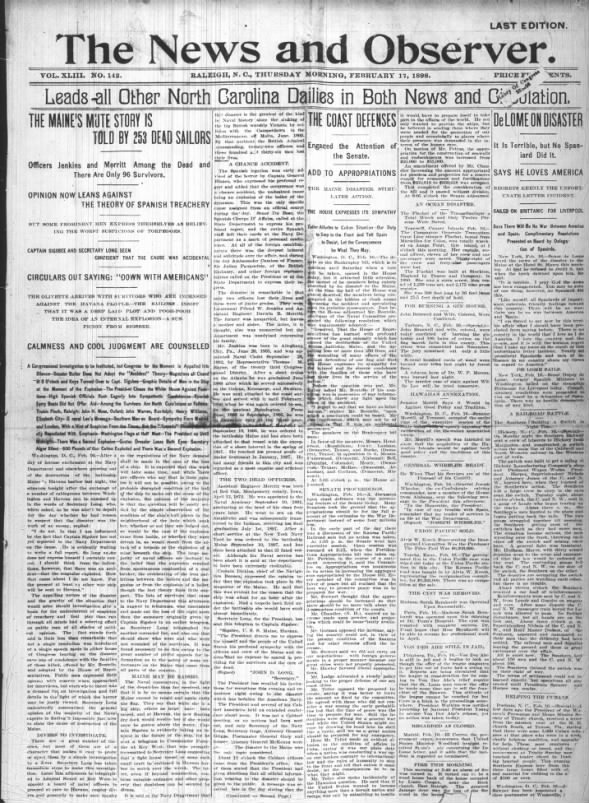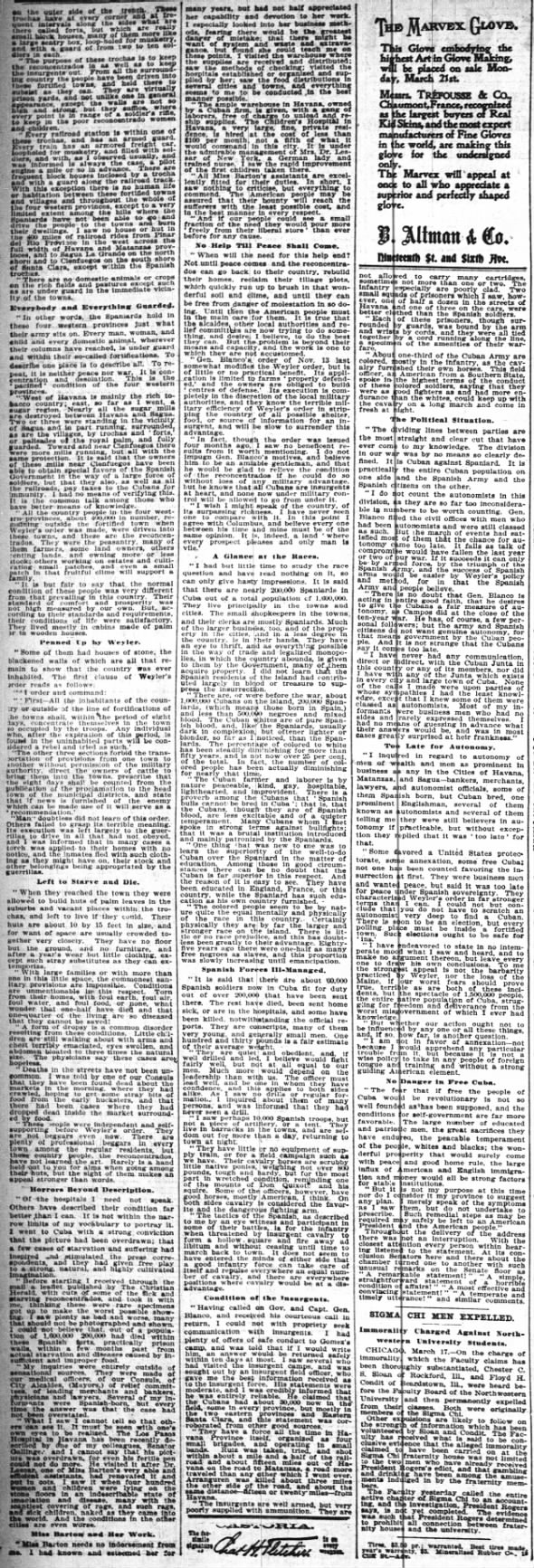Objectives |
Resources |
|
• How the desire for new trade markets by industrialized countries like England, Germany, Russia, Japan and the United States impacted the distribution of global power and authority at the onset of the 20th Century.
• How and why various Americans used religion, race and national honor to both defend and object to United States imperialism • How and why the United States gained territory and influence in the Pacific leading up to and as a result of the Spanish American War (e.g., Samoa, Hawaii, Alaska and the Philippines). • How and why the United States became involved in the Spanish American War and the implications of that war on American foreign policy. • How United States Presidents and their administrations developed and implemented imperial foreign policy strategies. • How the leaders and citizens of other nations reacted to the expansion of United States power and influence within their countries and others (e.g., Cubans, Puerto Ricans, Hawaiians and Filipinos). • How the desire of industrialized countries, such as England, Germany, Russia, Japan and the United States, to open new trade markets impacted United States’ foreign policy at the turn of the 19th Century. • How trade and commercial interests in East Asia led to the development of the Open Door Policy in China. • How and to what extent economic and political interests in Latin America and the Caribbean guided the foreign policies of Theodore Roosevelt, William Howard Taft and Woodrow Wilson. • How economic and political aims led to United States involvement in the Spanish-American War. • How and to what extent the outcome of the Spanish-American War made the United States an imperial power • How the results of the Spanish American War and the global imperial presence of the United States impacted American commerce and industry. • How American imperialists and anti-imperialists supported each of their stances on the United States becoming a world power (e.g., Albert Beveridge, Josiah Strong, Alfred Thayer Mahan’s The Influence of Sea Power upon History, Mark Twain, William Jennings Bryan and the Anti-Imperialist League). William Seward purchase of Alaska (1867) international DarwinismAlfred T. Mahan Josiah Strong Frederick Jackson Turner Imperialism Spheres of influence Queen Liliuokalani Seward’s Folly Treaty of Paris 1898 Platt Amendment “Splendid Little War” Social Darwinism Philippines Emilio Aquinaldo Commodore George Dewey Theodore Roosevelt Rough Riders William Randolph Hearst Joseph Pulitzer Yellow journalism USS Maine Panama Canal Pancho Villa Raids “Jingoism” Dollar Diplomacy Platt Amendment Teller Amendment protectorate Monroe Doctrine Roosevelt Corollary Dollar diplomacy Anti-Imperialism League Missionary (Moral) Diplomacy Boxer Rebellion Open Door Policy Annexation of Hawaii Teacher's Guide for above
Segment Five (begins at: 28 minutes, 28 seconds) Length: approximately 9 minutes Starting image: photographs of ships in San Francisco docks America becomes a world power. America wins control of Spanish colonies on both sides of the globe, including the Philippines. Filipinos want independence but President McKinley decides to annex the country instead. Manila becomes a crucial link to the markets in the Western Pacific. Segment Two (begins about 1 hr 16 min) Length: approximately 5 minutes Starting image: Chinese landscape The story of Eva Price, a missionary caught up in the political upheaval in China, begins. The Chinese Revolution begins. A mysterious sect called the Boxers views America as an imperial power exploiting China. Its members believe that missionaries are being used to open up new markets in China. To prevent this, they burn churches and exterminate missionaries. Segment Four (begins about 1 hr 35 mins) Length: approximately 12 minutes Starting image: newspaper headlines about the Boxer Rebellion In China the Boxer Rebellion spreads. Peking is under siege. Americans and their families are trapped inside the city. On June 13 the Boxers cut the telegraph wires connecting the foreign compound to the outside world. In response, President McKinley pulls his troops out of the Philippines and sends them to China without consulting Congress. This sets the precedent for later US Presidents to take similar actions. By the end of June, 2,500 American soldiers leave Manila to join an international army whose mission is to end the Boxer Rebellion and rescue the hostages. Segment Five (begins at: 35 minutes and 12 seconds) Length: approximately 5 minutes Starting image: headlines The siege in Peking continues. In 1898 American soldiers fight for the first time outside the western hemisphere and participate in an international effort to save the hostages held in Peking. The hostages begin to starve as they wait for the Allied soldiers to come to their rescue. Theodore Roosevelt defends McKinley's decision to send troops to China. The Democratic candidate, William Jennings Bryan, challenges the Republican party's vision of a more militant America. Bryan runs on an anti-imperial platform, determined not to be beaten by McKinley as he was four years before. Roosevelt campaigns successfully for himself and McKinley. Segment Six (begins at: 40 minutes, 38 seconds) Length: approximately 8 minutes Starting image: disaster headlines On August 13 the international army frees the hostages in China after 55 days of siege. The Chinese seek their revenge on missionaries in outlying areas. At the end of August the assassination of King Humbert I of Italy causes alarm for McKinley. Anarchists also attempt to kill the Prince of Wales and the Shah of Persia. Anarchists target McKinley because they believe the governments of the West will crumble without leaders. Leon Czolgosz, son of immigrants, begins a plot against McKinley |
NEW!! From SHEG....Historical thinking Matters...Spanish-American War
Age of Imperialism site (excellent) Imperialism News Broadcast Imperialism Webquest Guided Reading part 1 Guided Reading part 2 Guided Reading Part 3 Guided Reading Part 4 Imperialism WS Set #1 Imperialism WS Set #2 Imperialism WS Set #3 Imperialism Map Activity Soldiers in Philippines Activity Evidence for above Graphic Organizer for above Timeline for above Imperialism DBQ Savage Acts documentary viewing guideThe White Man's Burden and responsesRudyard Kipling, The White Man's Burden
The Response -- Poems: The Poor Man's Burden (Taylor) The Black Man's Burden (Chadwick) The Burden of Profit (Phelps) Beware of the Lion When He Talks Like a Man (W.P.G.) Home Burdens of Uncle Sam (Comfort) The Poor Man's Burden (McNeill) Why Talk of the White Man's Burden (Grit) The Black Man's Burden (Johnson) The Brown Man's Burden (Labouchère) The Real White Man's Burden (Crosby) Prose: The White Man's Burden (San Francisco Call editorial, 1899) The White Man's Burden as Prophecy (1899) The White Man's Burden (letter to the Boston Evening Transcript, 1899) Kipling, The White Man's Burden, and Imperialism (article, external link) White Man's Burden Images Detroit News Cartoon Detroit Journal Editorial Cartoon Pears Soap Advertisement Harper's Weekly Cartoon Judge Magazine Cartoon Life Magazine Cartoon Ram's Horn Cartoon State Historical Society, Wisconsin Cartoon |


